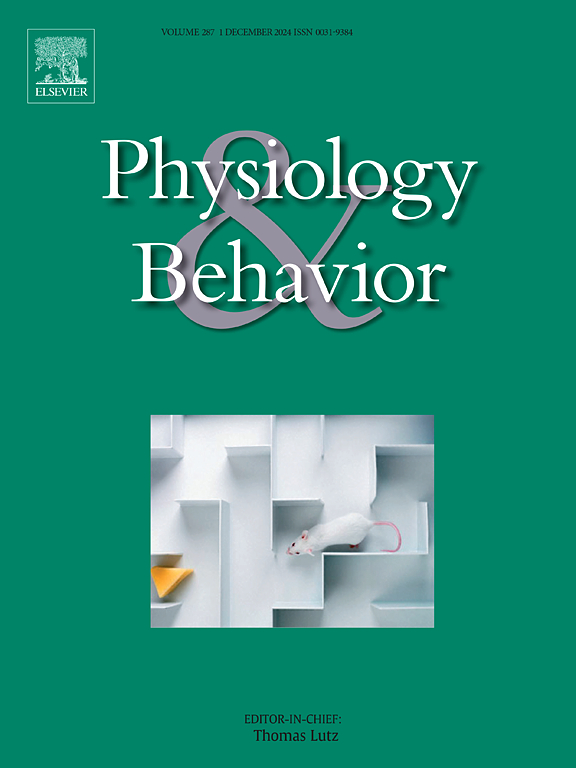Effect of passive hypoxia on body fat mass in older and young adults: A systematic review and meta-analysis
IF 2.5
3区 医学
Q2 BEHAVIORAL SCIENCES
引用次数: 0
Abstract
Aim
Research in recent years has shown some beneficial effects of exposure to hypoxia on human health. However, the beneficial effects of passive hypoxic exposure on weight management and body composition are less explored. This meta-analysis aimed to determine if passive hypoxic exposure, compared to normal oxygen levels, reduces body weight and body fat in both older and younger adults.
Methods
A systematic search of PubMed, Web of Science, and the Cochrane Library databases following PRISMA guidelines (up to June 2024) was performed. This analysis included studies focusing on the effects of passive hypoxia on body weight, body fat mass and lean body mass. Studies with interventions lasting less than one-week, dietary restriction, supplementation, or physical exercise were excluded. Subgroup analysis was conducted to see if the effects of passive hypoxia varied between younger (18–49 years) and older adults (≥ 50 years). Nine studies with a total of 218 participants were included.
Results
Passive hypoxic exposure induced greater reductions in body fat mass (SMD = -0.45 [-0.76, -0.14], I2 = 0 %, p = 0.004) and body weight (MD = -0.81 [-1.53, -0.08], I2 = 0 %, p = 0.03) compared with normoxia. Subgroup analysis showed that older adults had larger effects on body fat mass than young adults.
Conclusions
Moderate passive hypoxic conditioning could be a useful therapy of managing body weight and body fat mass without health potential risks, with a greater effect in the older than in the young adults.
被动缺氧对老年人和年轻人体脂质量的影响:一项系统回顾和荟萃分析
近年来的研究表明,暴露于缺氧对人体健康有一些有益的影响。然而,被动缺氧暴露对体重管理和身体成分的有益影响却很少被探索。这项荟萃分析旨在确定与正常氧气水平相比,被动缺氧暴露是否能降低老年人和年轻人的体重和体脂。方法按照PRISMA指南系统检索PubMed、Web of Science和Cochrane Library数据库(截至2024年6月)。该分析包括关注被动缺氧对体重、体脂量和瘦体重影响的研究。干预持续时间少于一周、饮食限制、补充剂或体育锻炼的研究被排除在外。进行亚组分析,观察被动缺氧的效果在年轻人(18-49岁)和老年人(≥50岁)之间是否存在差异。9项研究共纳入218名参与者。结果与常氧相比,被动缺氧暴露可显著降低体脂量(SMD = -0.45 [-0.76, -0.14], I2 = 0%, p = 0.004)和体重(MD = -0.81 [-1.53, -0.08], I2 = 0%, p = 0.03)。亚组分析显示,老年人对体脂量的影响大于年轻人。结论适度被动缺氧是一种有效的控制体重和体脂质量的治疗方法,对健康无潜在风险,对老年人的效果优于年轻人。
本文章由计算机程序翻译,如有差异,请以英文原文为准。
求助全文
约1分钟内获得全文
求助全文
来源期刊

Physiology & Behavior
医学-行为科学
CiteScore
5.70
自引率
3.40%
发文量
274
审稿时长
47 days
期刊介绍:
Physiology & Behavior is aimed at the causal physiological mechanisms of behavior and its modulation by environmental factors. The journal invites original reports in the broad area of behavioral and cognitive neuroscience, in which at least one variable is physiological and the primary emphasis and theoretical context are behavioral. The range of subjects includes behavioral neuroendocrinology, psychoneuroimmunology, learning and memory, ingestion, social behavior, and studies related to the mechanisms of psychopathology. Contemporary reviews and theoretical articles are welcomed and the Editors invite such proposals from interested authors.
 求助内容:
求助内容: 应助结果提醒方式:
应助结果提醒方式:


